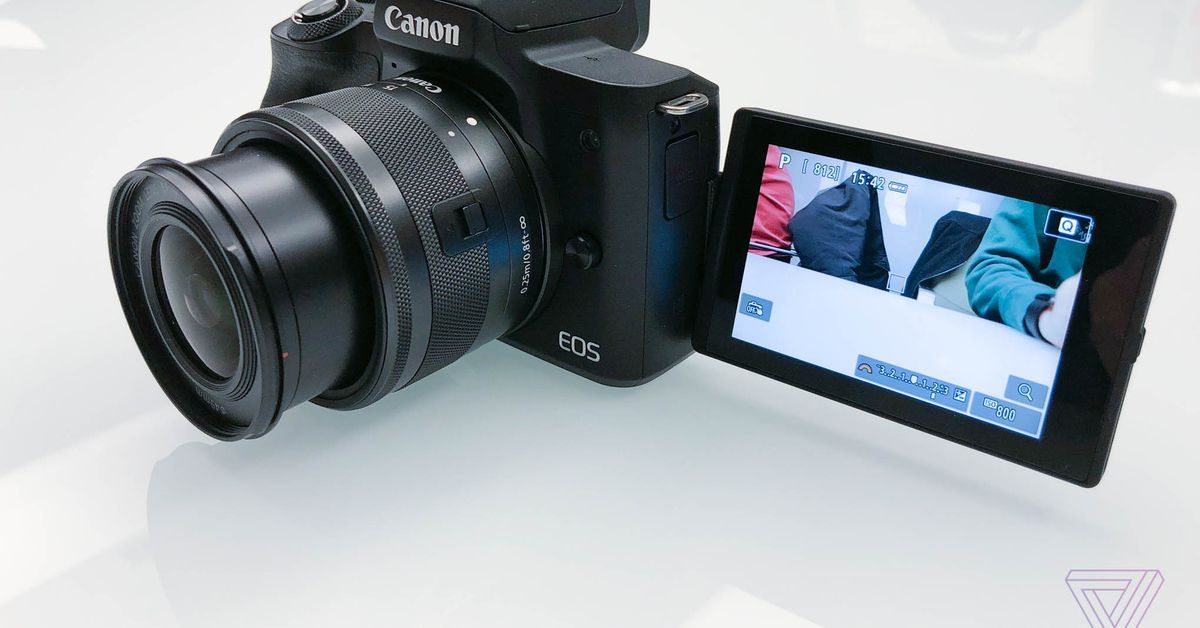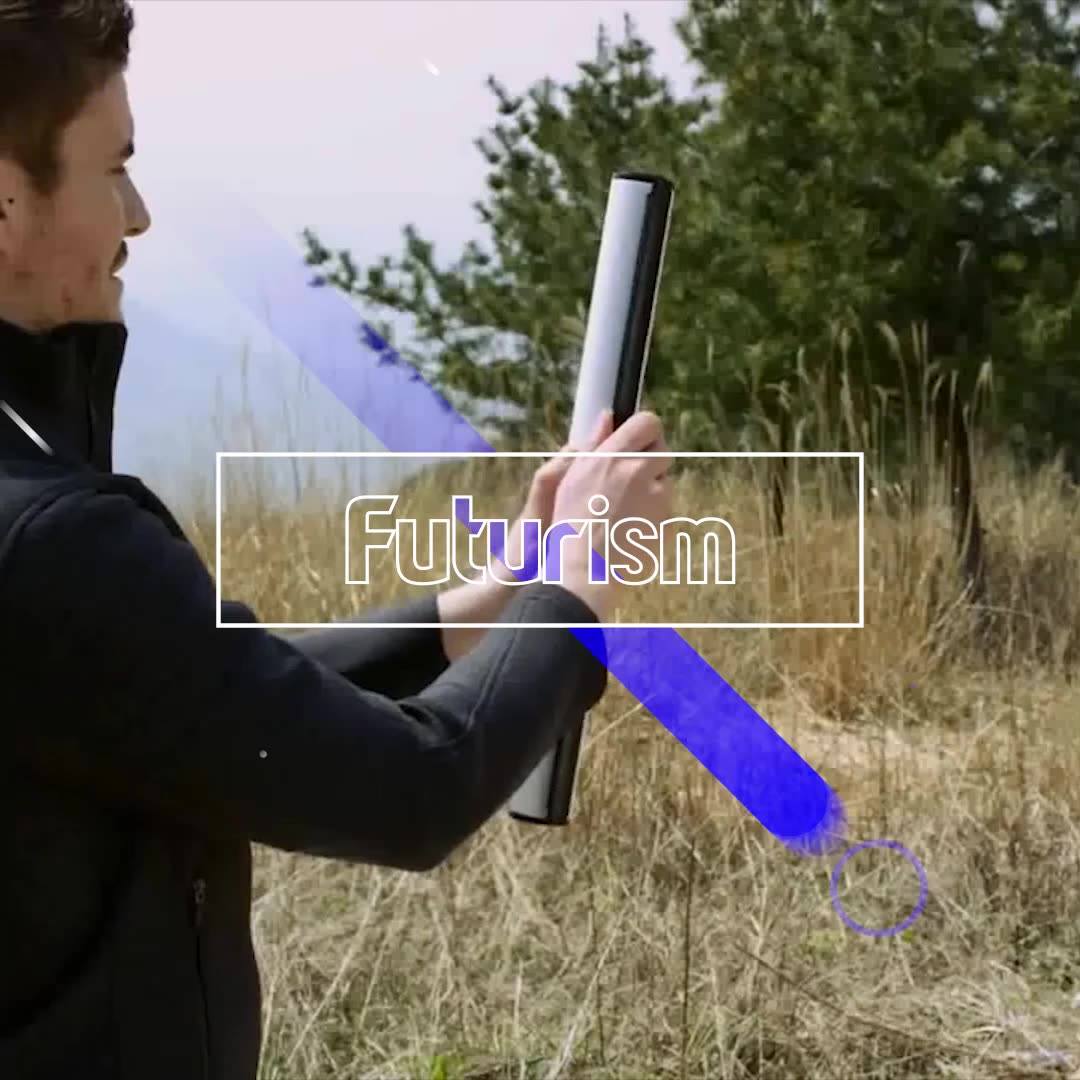The new $779 M50 is similar to the M5, but it’s got a new image processor, new RAW file format, a swivel screen, and more.
A new study has revealed that the optical waves or light waves can be turned upside down when they are allowed to propagate through specifically structured surfaces. Normally what happens is that the optical waves emerging out from a point source propagate circularly. That means the optical waves traveling away from a point source characteristically display circular, or convex, wavefronts.
The scientists compared these circular wavefronts to the waves seen on the water surface when a stone is dropped into the water. But the latest study revealed that these circularly propagating light waves’ wavefronts can be turned upside down with the help of a special surface. They developed a new material having a hyperbolic metasurface and successfully inverted the optical waves.
The study was led by Peining Li, an EU Marie Sklodowska-Curie fellow at nanoGUNE. According to him, the reason behind this circular propagation of optical waves is because of the fact that the medium through which light waves propagate is isotropic and homogenous. If the waves are isotropic in nature then their propagation is uniform in all direction and being homogenous means they carry the same characteristics throughout the propagation. But these optical waves can be inverted using specifically structured surfaces like the hyperbolic metasurfaces.
Finkbeiner’s success highlights how deep learning, one of the most promising branches of artificial intelligence (AI), is making inroads in biology. The algorithms are already infiltrating modern life in smartphones, smart speakers and self-driving cars. In biology, deep-learning algorithms dive into data in ways that humans can’t, detecting features that might otherwise be impossible to catch. Researchers are using the algorithms to classify cellular images, make genomic connections, advance drug discovery and even find links across different data types, from genomics and imaging to electronic medical records.
A popular artificial-intelligence method provides a powerful tool for surveying and classifying biological data. But for the uninitiated, the technology poses significant difficulties.
Inspired by the human eye, researchers at the Harvard John A. Paulson School of Engineering and Applied Sciences (SEAS) have developed an adaptive metalens, that is essentially a flat, electronically controlled artificial eye. The adaptive metalens simultaneously controls for three of the major contributors to blurry images: focus, astigmatism, and image shift.
The research is published in Science Advances.
“This research combines breakthroughs in artificial muscle technology with metalens technology to create a tunable metalens that can change its focus in real time, just like the human eye,” said Alan She, a graduate student at SEAS and first author of the paper. “We go one step further to build the capability of dynamically correcting for aberrations such as astigmatism and image shift, which the human eye cannot naturally do.”
When SpaceX launched the world’s biggest rocket ship on Feb. 6, that kind of seemed like a big deal — but not everyone is impressed.
Previewing the SpaceX Falcon Heavy launch, The Wall Street Journal seemed perplexed. Yes, the Falcon Heavy is big, admitted the Journal. But as a “heavy-lift booster,” it said, it is a product designed to serve a market that’s suffering “significantly eroded commercial demand” and “uncertain commercial prospects.”
The problem, as the Journal (correctly) pointed out, is that thanks to advances in rocketry, electronics, and materials technology, “both national security and corporate satellites continue to get smaller and lighter” (and cheaper).
Jupiter is a giant hot gaseous planet situated after the asteroid belt at a distance of 365 million miles when it is the closest w.r.t Earth and 601 million miles when it is the farthest. It was just a few years back when Jupiter’s moon Europa was reported as a potential planet that can hose life. Europa headlined on the internet in 2016 after scientists were able to see water vapor like plumes erupting from its crust. But, as a part of new research at the University of Sao Paulo, Brazil, Europa might have liquid water flowing beneath its 10-kilometer deep ice crust. The researchers used data extracted the data from an analogous location on Earth and found that life is sustainable in even the harsh environment that Europa offers as it has a huge liquid ocean under its crust.
Douglas Galante is the part of the research team that stretched towards the Mponeng Gold Mine in Johannesburg, South Africa in such as evidence. During the research, they found that bacterium Candidatus Desulforudis Audaxviator survives inside the mine at the depth of 2.8 km without any sunlight. It uses the method of water radiolysis where the water molecules are dissociated with the help of ionizing radiation. The analysis of the mine highlighted the cracks that run throughout the mine filled with cracks that supply water containing radioactive uranium which in turns, helps the bacterium to break down water molecules and consume the free radicals produced.
Once the free radicals are generated, these subatomic molecules attack rocks in the surrounding which produces sulfate. This is what these bacteria utilize to synthesize energy and store it without even interacting with the sunlight. One of a kind findings confirmed that it was the very first time when scientists were able to explore a living organism using nuclear energy to survive directly. Galante stated that this ecosystem is analogous to that of Europa’s ocean which has a great amount of thermal energy and absolute zero temperature.
Harvard University’s David Sinclair, world renowned for his anti-aging research, sees no limit on human life span and is collaborating on a clinical trial to evaluate the effectiveness of a new drug aimed at slowing the aging process…
“There is no maximum human life span,” says Sinclair, Ph.D., who is a professor in the Department of Genetics and co-director of the Paul F. Glenn Center for the Biology of Aging at Harvard Medical School. “Anyone who says that doesn’t know what they are talking about.”
Sinclair hopes to demonstrate what he has been researching, – and talking about, for the past 20 years – that aging is a disease, which can be treated.
At the end of 2017 and the first months of 2018, we witnessed a surge of interest in Initial Coin Offerings or ICOs. Perhaps the word “interest” gives too much credit to ICOs. Most are scams. ICOs are pushed through by vendor hype, rather than pulled through by investor research. They are almost all pump-and-dump schemes.
But what about Bitcoin? It is not a scam, but questions remain about regulation, intrinsic value* and its likelihood to be superseded by something better. Bitcoin skeptics point to two facts: (1) Bitcoin is open source, and so anyone can create an equally good altcoin. (2) Newer coins incorporate improvements that overcome governance and scaling issues: cost, transaction speed, the burgeoning electric needs of miners, or whatever…
 While both statements are true, they miss the point. This is not a VHS-vs-Beta scenario. Bitcoin has achieved a 2-sided network and it is free to fold in every vetted improvement that comes along. For Bitcoin, all those other coins are simply beta tests.
While both statements are true, they miss the point. This is not a VHS-vs-Beta scenario. Bitcoin has achieved a 2-sided network and it is free to fold in every vetted improvement that comes along. For Bitcoin, all those other coins are simply beta tests.
Even the functional tokens will unwittingly feed their “improvements” into Bitcoin. For this reason, it is a safe bet that Bitcoin will reign supreme for years to come—perhaps even long enough for the dominos to fall.
Why I rarely consult to ICOs or prospective ICO investors
I recently presented at cryptocurrency expos in Dubai and Gujarat. As a result of these presentations, my organization now receives ICO pitch decks, white papers and business summaries—15 or 20 each week. About ⅔ are sent by investors asking for advice as an investment opportunity, while ⅓ are from issuers seeking accreditation from CRYPSA or at least a quote than can be used as a comfort statement.
The market potential for consulting to issuers and high-rolling investors is very alluring. Figuring that we could certify gems and advise the dogs (help them to create a more legitimate token), we put together a business plan to address a massive new consulting opportunity. But guess what?
… They are ALL dogs! That’s right! ICOs are scams. They are not the same as ‘altcoins’, which is a term more commonly used for open source forks of legitimate cryptocurrency platforms.
Now, the SEC has begun to investigate ICOs and for good reason. Most are thinly veiled scams to fleece widows and orphans by ducking under securities regulations. Others are MLM scams, proprietary mechanisms (in which founders or early partners hold all the cards), or they are simply poor/fake implementations of Blockchain services.
How to spot an ICO scam (Hint: They are almost all scams!)
What fraction of ICOs are scams? More than 97% according CRYPSA. To preserve our reputation, we have suspended a high profit project to endorse the hidden gems. Despite scores of applicants, we simply cannot find any worthy of accreditation, with the exception of a few Bitcoin forks. But, these forks are altcoins, and not really ICOs.
Nearly all ICOs that we analyzed fall into one of these categories…
- Veiled securities offerings, designed to duck under securities regulations
- Created for the express purpose of pump & dump (without clearly disclosing caps, reserves or pre-mined stakeholders)
- A non-functioning coin that can only gain value through MLM. (This is not necessarily criminal, but outside our research and advisory mandate. Such coins are unlikely to provide value without quick, speculative trades and market timing that amounts to “dumb luck”).
 So, what are the signs that an ICO is a scam? Is there anything you can do—short of hiring an expert—to evaluate each new proposal that comes along?
So, what are the signs that an ICO is a scam? Is there anything you can do—short of hiring an expert—to evaluate each new proposal that comes along?
We don’t advise or recommend holding such risky tokens—but for those attracted to the siren call of ICOs, here are six common tale tell signs that you are dealing with a scam:
- If you received an announcement of an ‘Air drop’ or a coupon to get 25 or 50% bonus coins, it is a scam
- If the value of coins is influenced by your ability to find new investors, it is a scam
- If the coin is not based on Satoshi’s blockchain reference code, or is not open source, peer-to-peer and permissionless, then it is very likely a scam. (There are certain, limited exceptions)
- If the coin is based on Tangle, then it is a scam—or at least, it is functionally useless—and therefore it is a bad investment risk
- If the coin was pre-mined, then it is a scam. All mining by principals, insiders and early buyers must be disclosed and must be at least a full month after the first widely available public announcements
- If any advertisement, announcement, affiliate contact or press release ends up in the hands of someone who did not independently contact the issuer for information and a prospectus, it is most definitely a scam
Are you like me?
Because most initial coin offerings exhibit these traits, I pass on opportunities to consult or present at organizations and conferences that cozy up to ICOs. This decision limits my participation at many crypto venues, but my conscience is clean and my Bitcoin future is secure.
Resist the siren call and keep your wits about you. You, too, can also avoid the illusory trap of ICOs. Run, hide or just ignore them. “These are not the coins that you are looking for.” (with apologies to Obi-Wan Kenobi and Alec Guinness).
* Related:
- Spell it Out: What backs Bitcoin?
- ICO’s –vs– Value: Tale of two Bitcoins
- Can Bitcoin be Defeated by Legislation?
Philip Raymond chairs CRYPSA, publishes A Wild Duck and hosts the New York Bitcoin Event. He was featuerd at cryptocurrency conferences in Dubai, South Africa and India. Click Here to inquire about a presentation.








